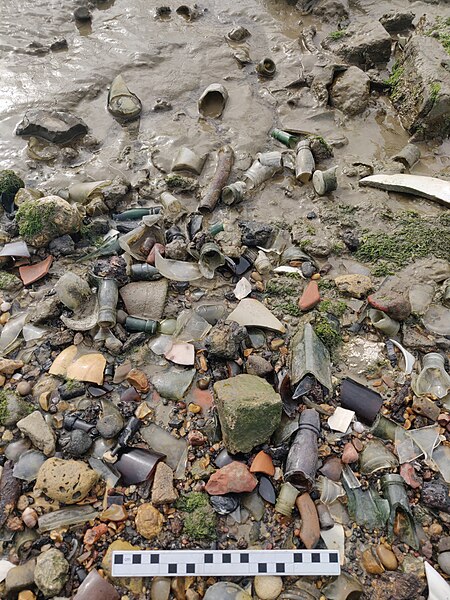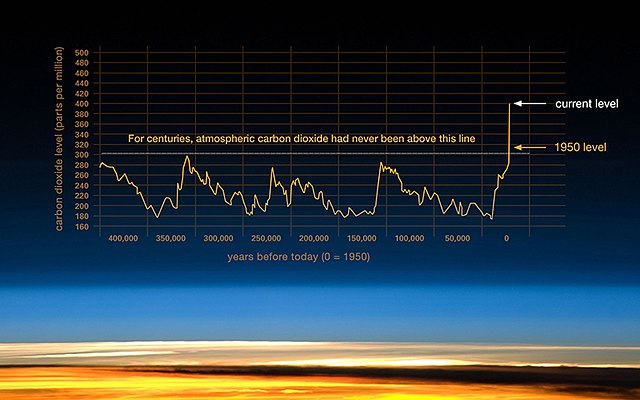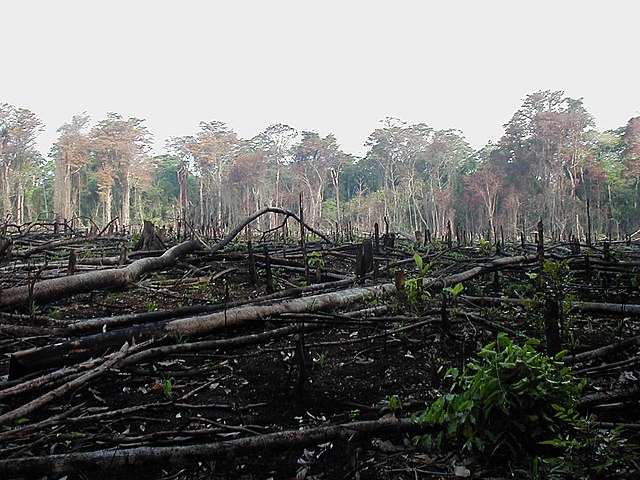The Anthropocene ( ) is the common name for a proposed geological epoch, dating from the commencement of significant human impact on Earth up to the present day. It affects Earth's geology, landscape, limnology, ecosystems and climate. The effects of human activities on Earth can be seen for example in biodiversity loss and climate change. Various start dates for the Anthropocene have been proposed, ranging from the beginning of the Neolithic Revolution, to as recently as the 1960s as a starting date.
Light pollution comes from highly populated areas at night, caused by human activity (electric lights)
The Trinity test in July 1945 has been proposed as the start of the Anthropocene.
Summary of major environmental-change categories that cause biodiversity loss. The data is expressed as a percentage of human-driven change (in red) relative to baseline (blue). Red indicates the percentage of the category that is damaged, lost, or otherwise affected, whereas blue indicates the percentage that is intact, remaining, or otherwise unaffected.
Technofossils
Human impact on the environment
Human impact on the environment refers to changes to biophysical environments and to ecosystems, biodiversity, and natural resources caused directly or indirectly by humans. Modifying the environment to fit the needs of society is causing severe effects including global warming, environmental degradation, mass extinction and biodiversity loss, ecological crisis, and ecological collapse. Some human activities that cause damage to the environment on a global scale include population growth, neoliberal economic policies and rapid economic growth, overconsumption, overexploitation, pollution, and deforestation. Some of the problems, including global warming and biodiversity loss, have been proposed as representing catastrophic risks to the survival of the human species.
Chart published by NASA depicting CO2 levels from the past 400,000 years.
Lacanja burn
Fishing down the foodweb
Urban sprawl in California








